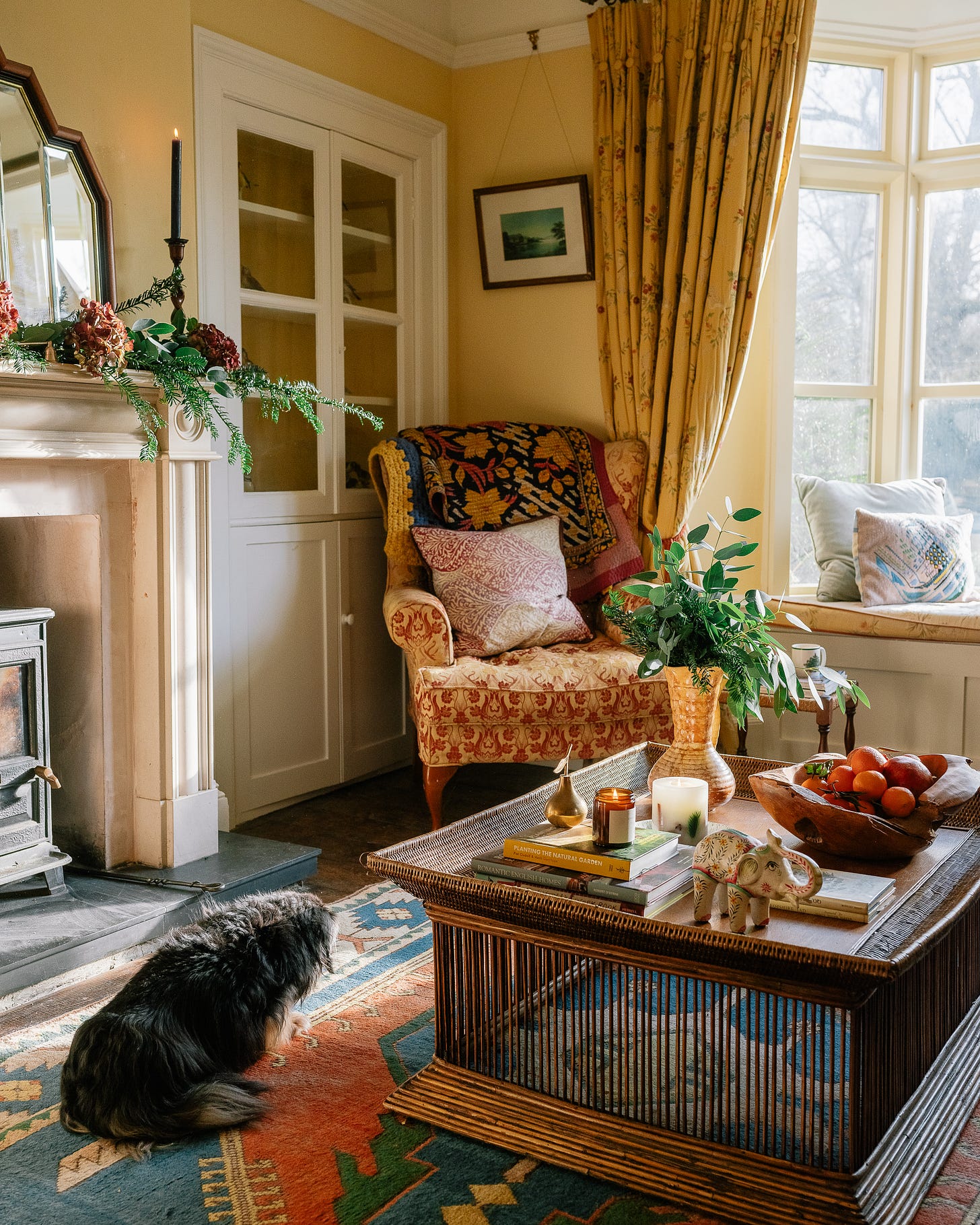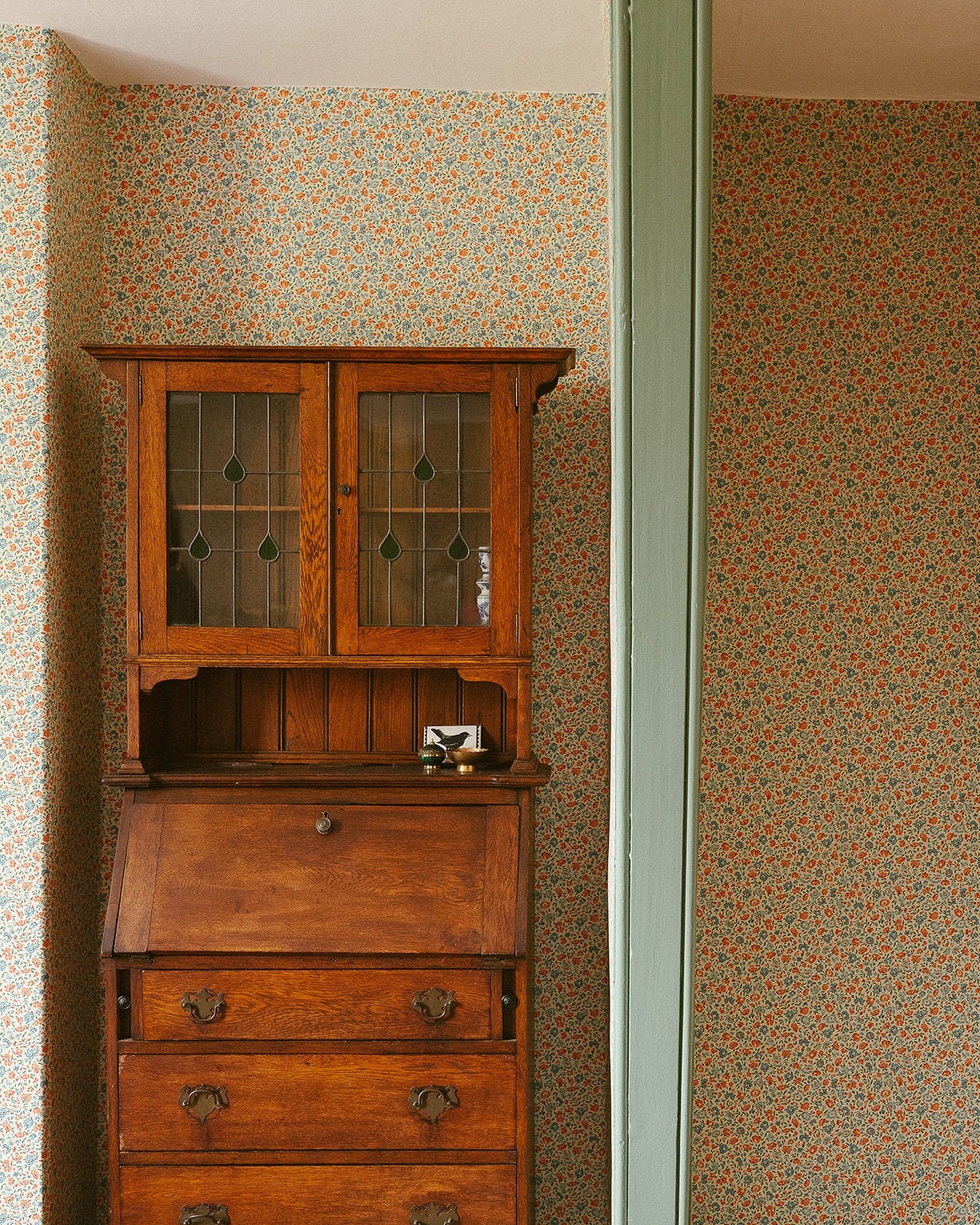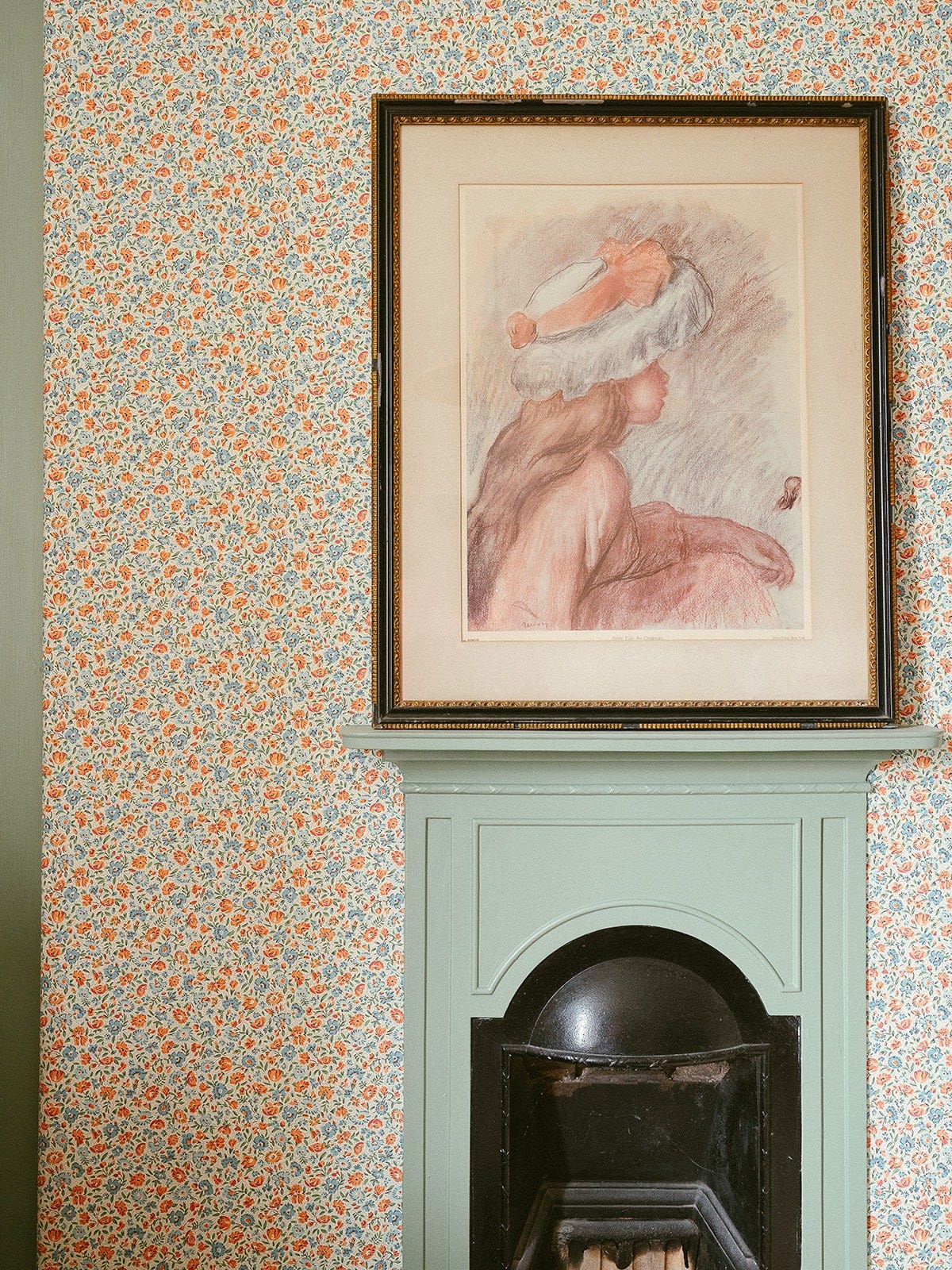Five things you could be sourcing second-hand and where to find them
high-end aspirations on a low-end budget
Welcome to The Frill, a weekly interiors shopping newsletter. If you haven’t already done so, please do subscribe and share.
The interiors world is a lovely place, populated with beautiful things. One of the big challenges of working within it, is that I spend my days lusting over homeware and furniture that I can’t afford. And whilst, yes, I do get a lot of pleasure sourcing for others and writing about the latest, greatest things out there, when it comes to my own home, I’ve had to be creative, and I’ve become rather good at finding second-hand furniture and accessories.
Some of my best finds include an OKA tray top rattan coffee table for £60, a set of Le Creuset casseroles bought for peanuts, an upholstered ottoman (£40 via FB Marketplace), a vintage Kitchen Aid mixer that cost me a tenner at the village fête and a roll top desk found at auction. I get a real thrill when I find a bargain. I also find it energises and enthuses me - I still spend hours styling my coffee table and I went down an extremely enjoyable recipe rabbit-hole with my new mixer. Each new find gives me a little buzz, and usually inspires new written work too.
My husband is equally proficient and can’t stop buying old paintings and prints. Last month, he picked up several huge and beautifully framed prints of Florence (he paid around £50 for each of them) and a watercolour seascape that somehow looks perfect on our landing. He swears by looking for antique (well-framed) prints as well as watercolours (often cheaper than oil paintings).
Shopping second-hand does have its disadvantages. Unless you can outsource your sourcing to an interior designer, it is not a quick activity. It has often taken me over a year to find particular pieces and you can waste hours of your life looking for things online. Searching in person can be equally time-consuming, but I think, more pleasurable, especially if you’ve got a nice coffee in hand and are happy to scour charity shops and antiques centres for treasure.
Five items worth buying secondhand and where to find them
Sofas
Sofas and armchairs are amongst the most expensive things we buy for our homes - and with good reason. Watch an upholsterer at work and you’ll see the amount of time and effort, not to mention metres and metres of fabric that go into the process. But before you buy new, remember there are incredible bargains to be found on FB Marketplace - I can barely talk about the skirted sofa I missed out on, old, but newly upholstered in Sanderson’s Rose & Peony linen - it was £50 and I was too slow. Vintage printed sofas are actually pretty easy to find - I know they are not for everyone, but if you like that Meta Coleman-esque homey but chic vibe, it is worth a gander. There are also some good dealers on Insta - I particularly like Gail O’Reilly (@gailie71) she always has beautiful pieces and is great for curtains too. Try searching by fabric manufacturers - Sanderson, Morris etc or by style - eg Howard style.
Fabric
Buying fabric secondhand can save you a fortune. I once found three metres of Colefax & Fowler fabric for £10 in a charity shop and I had Katy Takla make me some gorgeous cushions. I’ve sourced vintage Laura Ashley fabric for blinds via Vinted and our local recycling charity has a fabric section where everything is £4 a metre (if you find yourself in Shropshire and want the details, I can be bribed!). Haines Collection is well known, and sells discounted designer fabric, surplus from the interiors industry. I’d go there if I wanted a metre of a particular fabric - the aforementioned ottoman will eventually be recovered. I am eyeing up some Fermoie fabric from Haines - even if I pay £100 for the discounted Fermoie, the ottoman in total will have cost me less than £150, and look like one that would have cost far, far more. Lastly, look out for vintage Indian kanthas and suzanis - they can be used to transform headboards or hung as door curtains (again a very cost effective way to create something magnificent - see Chloe Jonason for inspiration). I have bought several from Wilstone.
3. Victorian furniture
Victorian furniture often costs less than the new equivalent from Ikea. For big pieces - dining tables, chests etc - I always see what I can get second-hand before I buy new. Victorian pieces are cheaper than earlier antiques as many were mass made. Victorian pine chests look gorgeous and nostalgic in kids rooms and you’ll definitely be able to source a large kitchen dresser for very little money indeed. Most antiques centres will deliver for a small cost, so don’t assume shopping there will be a faff. Many will deliver across the country too - so don’t be afraid to look for furniture when you are away for a weekend. A friend recently came to stay with us and bought several large pieces of furniture from our local antiques market, all of which was delivered down south. For nicer bits of furniture, I like Pato Interiors - she is particularly good for larger pieces, dressers etc.
4. Crockery
When I walk into a charity shop or vintage shop, I always look at the crockery first. Serving platters are a great buy - because nice new ones are pricey - as are plates for the wall. I have small collection of Burleigh Blue Asiatic Pheasant so I’ll always look for that - I use it daily, in fact I’m quite religious about having my porridge in it every morning. Crockery looks good en masse, as illustrated beautifully by Kate Elwell’s dresser, itself a FB Marketplace find.

A FB Marketplace dresser and crockery collection belonging to Kate Elwell who runs Master the Art 5. Coffee table books
“Books do furnish a room” - it’s absolutely true and our house is filled with them. We are a family of bookworms and I confess that a lot of them are purchased new. But as well as all the fiction we’ve all got stacked by our beds, I love to have non-fiction books scattered around the house, for us to peruse when we want a break from a screen, or for guests to look at when they come and stay. I love vintage interiors books - both Oxfam Books and the secondhand bookshop at our local NT property, Attingham Park, are great places for finding interesting ones. We’ve found books on Victorian tiles, huge Phaidon books full of paintings and piles of gardening books that I probably should reference more often.
Lastly, some boring but practical notes for second-hand shopping
Measure so you don’t bring things home only to find that they are too small or too big for their intended space - most of us can’t just visualise it in our heads. The tape measure is your friend. Get a cool one with the button that reels it back in.
Check things over properly for flaws that you can’t live with (active woodworm, broken bits if you aren’t someone who can fix things).
Consider the administrative charge - I have learned the hard way that everything we bring into our homes has to either stay there, or one day be got rid of. The getting rid of part is harder than the acquiring - can you sell it, will you have to take it to the recycling centre etc. Just because it is good value, doesn’t mean it should come home with you. [Of course the flip side of this is that I do still believe that if you fall in love with something, and you don’t have a place for it right now, but you can store it, you should probably get it! Don’t be an idiot like me and miss out on the Sanderson sofa.]








